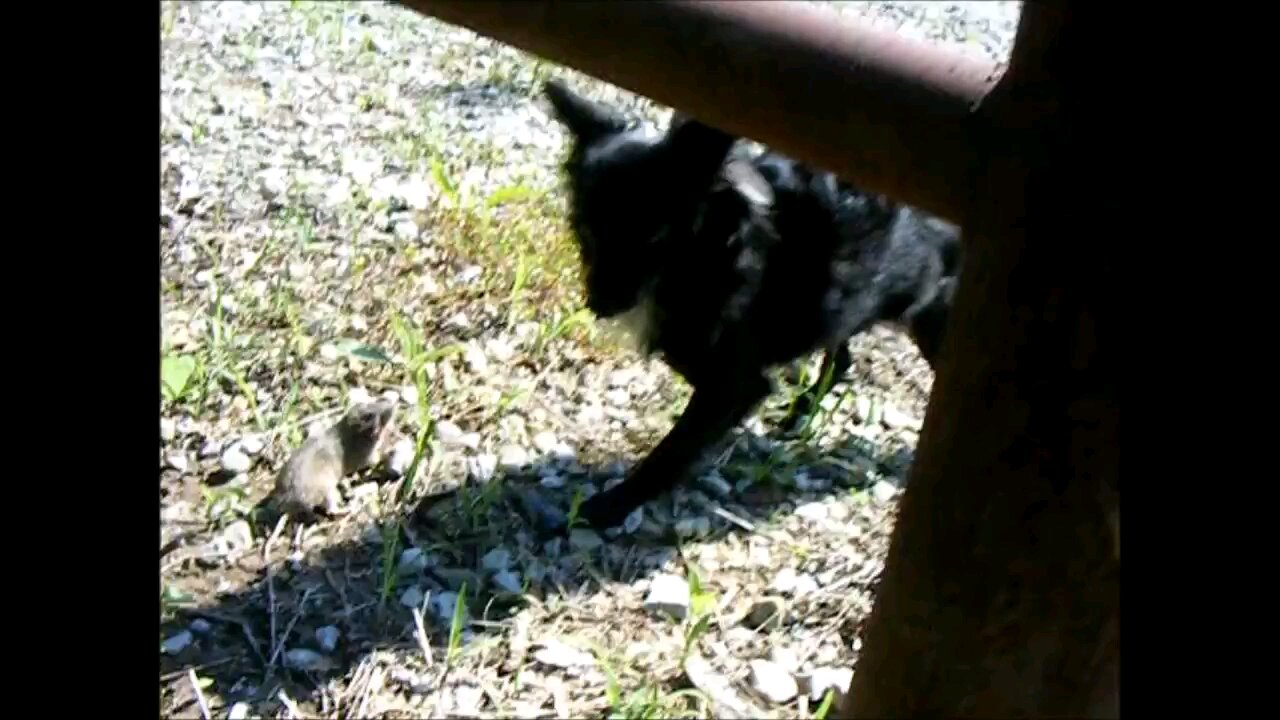Premium Only Content

Max and I turn a Pocket Gopher loose...
Pocket gophers, scientifically known as Thomomys spp., are small burrowing rodents belonging to the Geomyidae family. They are native to North and Central America, where they inhabit a variety of environments, including grasslands, agricultural fields, and forests.
These rodents are well-adapted to their subterranean lifestyle, spending most of their time underground in a network of tunnels and burrows. They have stout bodies, small eyes, and powerful forelimbs equipped with large claws for digging. One of their distinctive features is their fur-lined external cheek pouches, or "pockets," which they use to carry food and nesting materials.
Pocket gophers primarily feed on underground plant parts, such as roots, tubers, and bulbs. They are herbivores, and their diet includes a wide range of plant species, including grasses, shrubs, and trees. They use their sharp incisors to gnaw through plant material, and they are capable of consuming large quantities of vegetation.
Their burrowing behavior has a significant impact on the ecosystem. Pocket gophers play a crucial role in soil aeration and nutrient cycling. Their burrows can extend for several hundred feet and include nesting chambers, food storage areas, and multiple entrances. These burrows help to mix and aerate the soil, improve water infiltration, and create habitat for other species.
Despite their small size, pocket gophers can be considered pests in agricultural areas, as they can damage crops and garden plants by feeding on their roots and tubers. However, they are an essential part of the ecosystem, and their burrowing activity helps to maintain soil health and biodiversity in many natural environments.
-
 59:34
59:34
Dialogue works
1 day agoMohammad Marandi: It’s WAR: Iran’s Supreme Defense Council ACTIVATES –Hezbollah REFUSES to Surrender
6977 -
 10:23
10:23
TheSaltyCracker
15 hours agoMuslims Immediately Threaten New Yorkers After Zohran Win
20.4K398 -
 18:40
18:40
Actual Justice Warrior
15 hours agoMamdani Pledges To DESTROY New York
1.86K29 -
 28:53
28:53
iCkEdMeL
15 hours agoBREAKING: 9 DEAD After UPS Plane BURSTS Into Fireball at Louisville Airport
16.6K7 -
 20:52
20:52
Professor Nez
18 hours agoThe TRUTH is Actually WORSE than we Thought...
1.69K16 -
 8:59
8:59
MattMorseTV
16 hours ago $0.03 earnedTrump’s DIRE WARNING to the Senate GOP.
65.6K80 -
 2:13:33
2:13:33
Side Scrollers Podcast
19 hours agoAsmongold SUED for Emotional Distress + Hasan REJECTED+ INSANE Plane Crash + More | Side Scrollers
81K24 -
 21:39
21:39
Nikko Ortiz
4 days agoI Take A North Korean Shooting
74.2K11 -
 23:01
23:01
GritsGG
17 hours agoWarzone Solo Dubular! Last Night Time Solo???
7.81K -
 22:47
22:47
The Pascal Show
14 hours ago $0.02 earnedTHEY’RE HIDING EVIDENCE?! Candace Owens EXPOSES Foreign Connection In Charlie Kirk Shooting
16.3K24